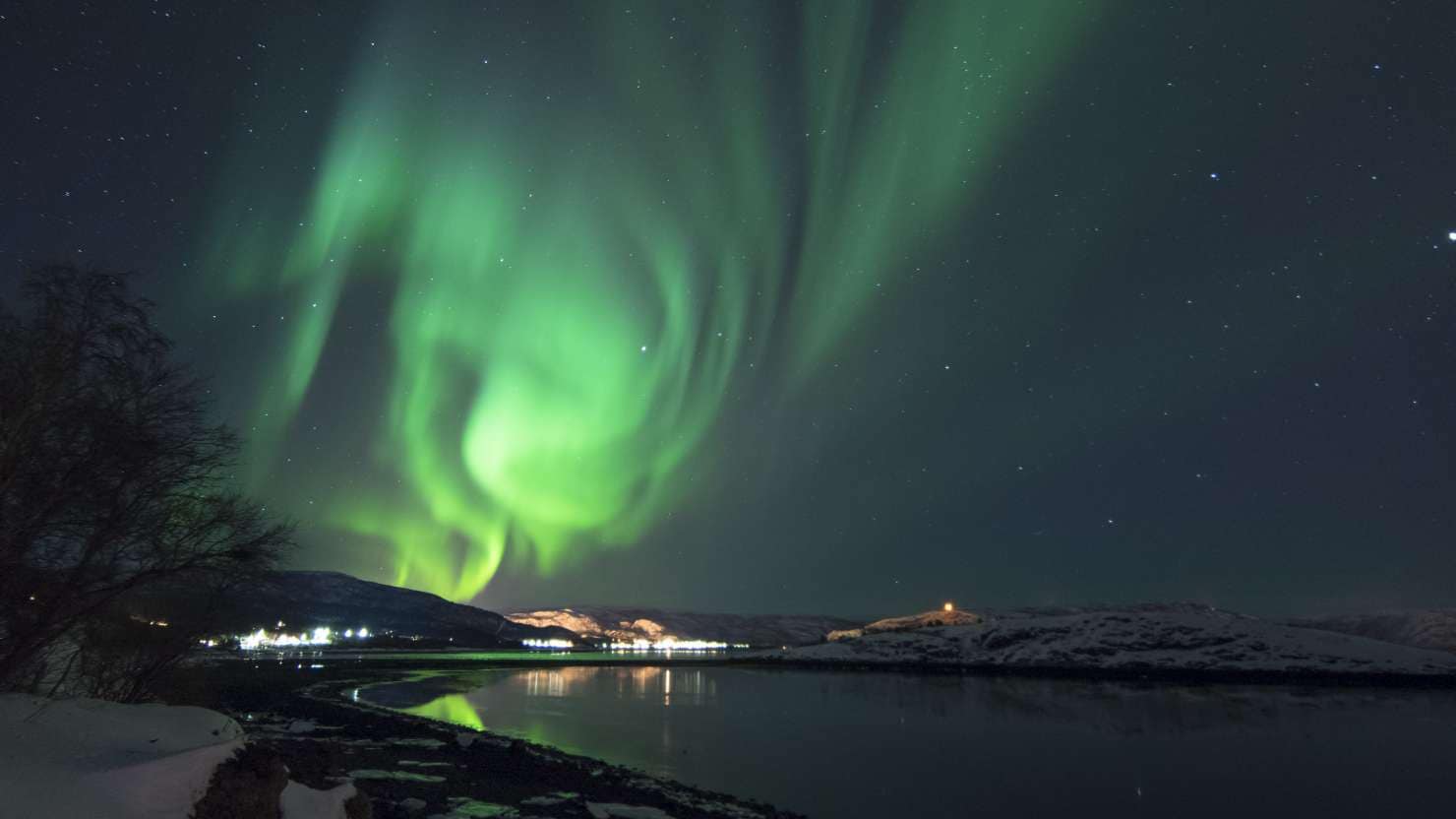Follow Arcadia around the world
Explore more on Destinations

Norway is on our holiday radar and we can’t wait to explore the country’s epic landscapes, natural wonders and fresh flavours once more. As a little refresher, here are six amazing experiences that add up to an unforgettable adventure in N-O-R-W-A-Y…
A tick for the bucket list, if ever there was one. Seeing the Aurora Borealis dance across the night sky is a once-in-a-lifetime experience. While we can’t guarantee a light show, we’ll give you the best chance possible to see the northern lights when you visit Tromsø or Alta between October and late March on Aurora or Arcadia.
Both ports are renowned base camps for light-spotters: local experts track the weather, know optimum conditions and can take you to the best spots for sightings. Many will even help with photography tips to capture the ethereal landscapes and green, blue, pink, and violet displays. To complete the experience, you could also enjoy refreshments or even dinner at a traditional Sami camp. Northern Norway is home to half of the world’s Sami population – you’ll be offered a cosy welcome and given insight into their traditional and modern way of life as you wait for the greatest light show on Earth to fill the skies.

Cameras at the ready. Old Stavanger is a picture-perfect example of how to preserve the traditional old heart of a city. Located on the west side of Vågen in the city centre, the area is based around 173 original wooden buildings built at the end of the 1700s and the beginning of the 1800s. Proud locals still live in the pristine white cottages while others are home to galleries, handicraft boutiques and picturesque cafés. Two museums (the Norwegian Canning Museum and Stavanger Maritime Museum) add to the genteel sense of hustle and bustle along the harbour front. The area is particularly charming in summer months when the white wooden structures are the canvas for a riotous display of garden flowers, hanging baskets and scented rambling roses.

Towering 604m above Lysefjord, with its iconic 25mx25m flat summit, stands Preikestolen or Pulpit Rock. Named by CNN Go and Lonely Planet as one of the world’s most spectacular viewing platforms, little wonder it is one of Norway’s most iconic natural attractions.
Whether accessed via a hiking trail from Stavanger, enjoyed from the fjord below or seen from above (helicopter rides over it are popular), Pulpit Rock is an essential experience with stunning views of Lysefjord.
A different type of rock experience awaits at Alta Museum World Heritage Rock Art Centre, home to unique UNESCO-protected rock carvings that bear the traces of a settlement dating from around 4,200 to 500BC. Walkways take you through the scenic area of rocks, upon which are depicted scenes of the life of early hunters and fishermen. The timeless views over Alta fjord are thought-provoking, too.

With 2,650km of rugged coastline, more than 1,000 fjords, endless waterfalls, rivers, lakes, snow-capped mountains and glaciers, water is the life blood of Norway. The element in its many forms has shaped Norway’s history, culture and identity.
The Vikings’ intrepid journeys took them all over Europe and Asia, bringing trade and untold riches while modern enterprises, from North Sea oil and hydro-electric power to fish farming and fjordic tourism, continue to drive the economy. With a small population, Norwegians enjoy one of the highest standards of living in the world and star in the top 10 of the world’s healthiest nations. Blessed with clean air, pure waters and untold beauty, Norway’s coastlines and fjordic landscapes are a mecca for outdoor activity – hiking, biking, kayaking, fishing, downhill and cross-country skiing are but a few activities embraced by all ages. Join in with the locals, be at one with the natural watery wonders and you’ll feel the benefits, too.

Åndalsnes is known as the mountaineering capital of Norway with access to some of the country’s finest mountains and climbing, a mountaineering centre and Norway’s tallest indoor climbing wall.
Two magnificent viewpoints over Romsdalsfjord are close to the port itself. Hike 550m above sea level to the Rampestreken viewing platform or follow the Romsdalstrappa stone steps all the way to the top of Mount Nesaksla, 708m above Romsdalsfjord. For truly spectacular vistas, hit the Romsdalseggen trail, named by Lonely Planet as one of the world’s most scenic hikes. For less experienced hikers and children, Litlefjellet trail also offers breathtaking views. For the ultimate high, make your way up the vertiginous Romsdalsstigen via ferrata. Just don’t look down!
For more relaxing views, take the Rauma Line scenic railway. Considered one of Europe’s most beautiful train rides, it meanders through a fairytale landscape from Åndalsnes to Dombås or Bjorli. Look out for the infamous Trollveggen mountain wall, Europe’s tallest vertical rock face that stretches about 1,700m from base to summit.

Norway’s distinctive yellow, rusty red and white houses are an Instagrammer’s dream. But they represent more than pretty pictures.
The traditional colours tell a socio-economic story of wealth, status, geography and profession. Traditionally, rural farming and fishing communities painted their buildings red. The cheapest colour to make (mixing ochre with fish or animal oils) it was used by lower-income professions in exposed situations that would need regular repair. Yellow paint was a more expensive to produce and therefore a sign of relative prosperity for traders and merchants. White paint, which used mineral zinc, was very expensive to produce and thus a sign of wealth and status. Modern paints make all things equal but these colours have enduring architectural appeal. As you line up your shot of an iconic red barn, yellow shopfront or elegant white home, cast your mind back to Norway’s DIY colour-codes of old.

of
Don’t miss out! Sign up for latest news, offers and competitions from P&O Cruises.